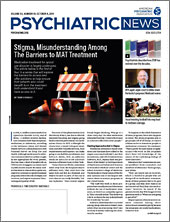Youth around the world are increasingly being diagnosed with a spectrum of mood disorders. Improved awareness that mood disorders commonly start in childhood has decreased stigma and made treatment more accessible. With early identification comes the promise of reducing the silent suffering that frequently occurs when an accurate diagnosis or adequate treatment is delayed. Are we prepared and resourced to universally screen for and treat children and adolescents for mood disorders? Who is most at risk for developing lifelong recurrence of mood symptoms? Which interventions are readily available for youth who are at highest risk for developing intractable mood disorders? Let’s briefly consider each question.
Universal or Targeted Screening?
Many successful screening programs have been implemented in schools and in pediatric primary care settings. Depression screening programs based on comprehensive, multi-informant, and novel biological risk factors may improve the sensitivity and specificity of depression screening compared with programs limited to single self-report assessments. Screening during critical sensitive windows, such as during transitions between middle school to high school and high school to college, may also be valuable. Indeed, a lag between diagnosis and treatment can lead to illness progression and subsequent treatment nonresponse, so screening for early-onset mood disorders is imperative for clinicians working with youth, but also for working with adults.
Which Children Are at Risk?
Children with a family history of mood disorders and exposure to early life stress are predisposed to developing a mood disorder compared with the general population. Emerging evidence suggests that children of parents with bipolar disorders are at an increased risk compared with the general population for developing mood and other psychiatric disorders and that there may be a differential response to psychotropic medications (toward increased side effects) based on this familial risk. Maternal depression also has received considerable research attention as a contributor to the onset and persistence of mood symptoms in children. For example, adolescents whose mothers experience moderate to severe and persistent symptoms of depression have more relationship problems with peers and lower prosocial behaviors compared with children of mothers with low levels of depression, independent of socioeconomic or other characteristics.
What Interventions and When?
We have many reasons to believe that we can make tangible differences in the lives of youth with or at risk for mood disorders through early identification of key risk factors and targeted treatment. For example, although sex, high polygenic risk scores for depressive symptoms, and maternal postnatal depression have been associated with persistent forms of depression, exposure to parental domestic violence and bullying seem to be associated with discrete and time-limited forms of depression that are highly responsive to early intervention. We have also learned that youth with pediatric-onset bipolar disorder spend most of their time in euthymic mood states and may have better outcomes than those with adult-onset bipolar disorder. It turns out that rates of bipolar disorder are not higher in the United States than in other Western countries as previously thought and do not appear to be increasing over time, though prevalence rates of pediatric bipolar disorder vary due to inconsistent use of standard diagnostic criteria. These latest findings support leveraging early and preventive efforts for most youth, while concentrating advanced therapeutic efforts on youth who are at greatest risk for poorer outcomes and at critical sensitive windows in development.
There are a number of available evidence-based treatments for youth with and at risk for mood disorders, and the level of evidence is strengthening with controlled treatment trials, Food and Drug Administration–approved interventions (see
figure), and prospective follow-up studies to determine long-term outcomes. Family-based intervention strategies that directly target family history risk provide psychoeducation, communication skills building, and problem-solving strategies to prevent mood disorder onset and recurrence.
Mechanisms underlying risk for developing a lifelong mood disorder or how a child responds to treatment for a mood disorder are emerging. A number of researchers are now conducting prospective, longitudinal studies of youth and families with or at risk for mood disorders to observe children through the course of their neurodevelopment and as they transition into adulthood. With a strong movement toward evidence-based practice, clinicians and patients alike are seeking guidance from the latest research on clinical best practices and the development of novel treatments that will outperform the current standard of care.
Our patients and families count on us to share advances on the horizon for the identification and treatment of mood disorders in youth. Sharing our efforts to learn from the past and innovate for better treatments conveys hope amidst the stressful contexts of their daily lives. ■
References

